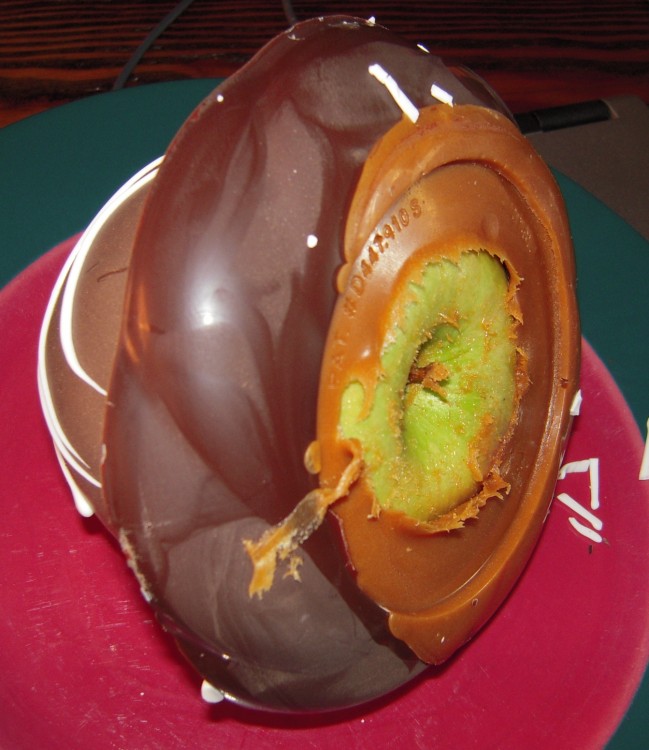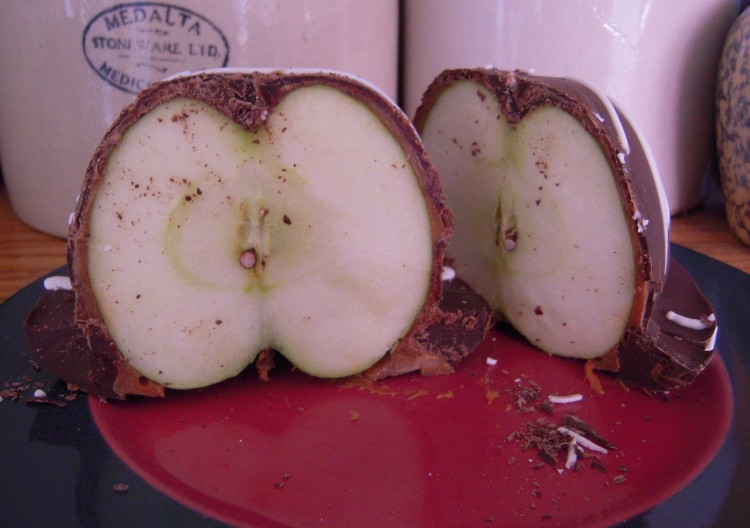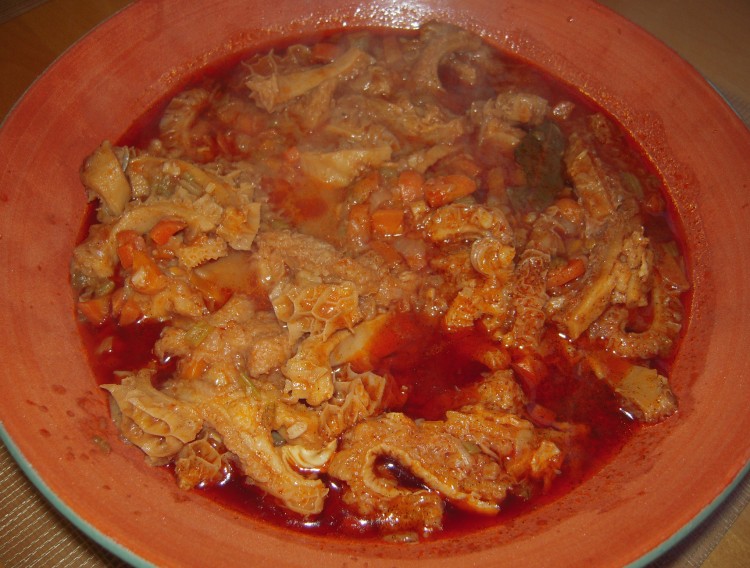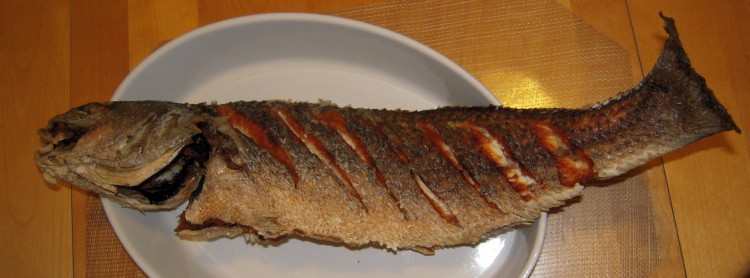
Costco’s new chocolate-covered caramel apple
I like plain sweets and have a fondness for soft caramel, so when I saw this choco-covered Granny Smith caramel apple at Costco last week I almost swooned.
There is no way I was not going to buy this thing at least once, in the hope it would be everything Mrs. Prindable’s could be if they made their apple products with higher-quality coatings: pleasantly sweet and bitter from the chocolate, soft and creamy from the caramel, and crunchy and tart from the green apple. When this combination is done right it’s the perfect grown-up caramel apple.

The bottom of Costco’s chocolate-covered caramel apple
This is a large enrobed apple presented in a domed container; mine weighed in at 14 ounces. The chocolate and caramel pooled during production, providing a thick ring of goodness – as the photo above shows. Upon further inspection I found that the caramel was, indeed, quite soft, putting any fears about fillings and crowns to rest. It sliced easily while retaining integrity.

Costco’s chocolate-covered caramel apple cut in half
In terms of flavor, texture and overall impact, this is a winner. The apple was fresh, crisp and tart. The chocolate of a decent quality and not overly sweet. The caramel creamy.
While there was some caramel around the entire apple, I wished that layer was a bit thicker, but I have no real complaints. This is a very, very good product and I will purchase it again when the craving strikes.
Well worth it at $5.99.




